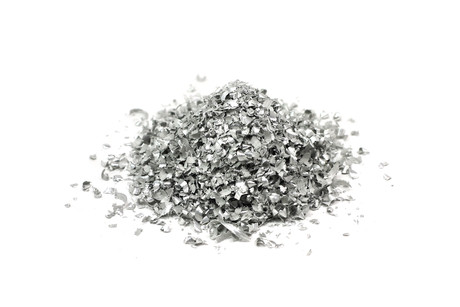Magnesium batteries are one step closer to reality

US scientists have discovered a cathode material that is said to enable magnesium batteries with higher energy density, as well as advances in safety, cost and performance, in comparison to their lithium-ion (Li-ion) counterparts.
The research was led by Professor Sarbajit Banerjee from Texas A&M University, who has spent a number of years trying to better understand ion intercalation — the critical process by which ions like lithium and magnesium move in and out of other materials within intercalation batteries. Together with collaborators at the University of Illinois at Chicago (UIC), the Lawrence Berkeley National Laboratory and Argonne National Laboratory, he developed a battery solution that hinges on a redesigned form of an old Li-ion cathode material — vanadium pentoxide — which his team proved is capable of reversibly inserting magnesium ions.
Using one of the world’s most powerful soft X-ray microscopes — the Scanning Transmission X-ray Microscope (STXM) and X-ray Emission beamlines — at the Canadian Light Source in tandem with one of the world’s highest resolution aberration-corrected transmission electron microscopes housed at UIC, the researchers were able to observe the unique electronic properties of their novel vanadium pentoxide and directly prove magnesium-ion intercalation into the material, revealing why this new type of vanadium pentoxide is superior to the old version as well as to Li-ion batteries. Their results have been published in the journal Chem.
Laptops and mobile phones are two examples of technologies enabled by the lithium-ion battery, which revolutionised energy storage capacity and rechargeability in comparison to its lead-acid and nickel-metal hydride predecessors. But while lithium-ion technology currently dominates the market, the researchers wrote that “the safety and long-term supply of lithium remain serious concerns”. Not only is lithium’s widespread use expected to see it come in increasingly short supply, but there have been recent reports of Li-ion-powered devices having either caught fire or exploded as a result of the fundamental flammability and reactivity of lithium.
“Apart from being much safer for consumer applications, magnesium-ion technology is appealing fundamentally because each magnesium ion gives up two electrons per ion — twice the charge, whereas each lithium ion gives up only one,” said Texas A&M graduate student Justin Andrews, first author on the study. “This means that, all other considerations aside, if you can store as much magnesium in a material as you can store lithium, you immediately almost double the capacity of the battery.”
But for all their perceived advantages — including a higher melting point and higher abundance than lithium, the ability to form smooth surfaces when recharging and the potential to deliver more than a fivefold increase in energy density, according to the researchers — magnesium batteries have been essentially sidelined by a variety of problems. First and foremost is the lack of a suitable cathode, or positive electrode — otherwise known as the part of a battery where the magnesium ions enter during discharge of the battery to power an electronic device and then exit during charging.
“Indeed, the most exciting thing about magnesium ions — namely, that they store twice the charge in battery applications — also forms the basis for the biggest challenge,” said UIC chemist Jordi Cabana. “The higher charge of the magnesium ions make them ‘stick’ much more strongly with surrounding atoms.”
In other words, Professor Banerjee said, the magnesium ions get waylaid as they are traversing through the paths within the vanadium pentoxide cathode material. Their sluggish movement is what makes it so difficult to make viable magnesium batteries.
“In many structures, some of these interactions are very favourable, meaning that the magnesium is quite happy to sit and stay a while in those specific sites,” Andrews explained. “In our material, the magnesium is ‘frustrated’ as it moves through the lattice, because it encounters many less-than-optimal environments. In this sense, it is more than happy to just keep moving right along, leading to an improvement in capacity and diffusion.”
Seeking to solve this problem, Professor Banerjee said his team “essentially reconfigured the atoms to provide a different pathway for magnesium ions to travel along, thereby obtaining a viable cathode material in which they can readily be inserted and extracted during discharging and charging of the battery”.
This rare phenomenon is achieved by limiting the location of the magnesium ions to relatively uncomfortable atomic positions by design, based on the way the vanadium pentoxide is made — a property known as metastability. This metastability helps prevent the magnesium ions from getting trapped within the material and promotes complete harvesting of their charge-storing capacity with negligible degradation of the material after many charge-recharge cycles.
Andrews said the team’s research represents a significant advance towards solving the cathode problem while also highlighting the inherent advantages of using much more imaginative, metastable materials like this new form of vanadium pentoxide. He did, however, admit that there are “still several other fundamental problems to overcome before magnesium batteries become a reality”.
“Nevertheless, this work moves magnesium batteries one step closer to reality — namely, a reality where batteries would be less expensive, lighter and safer for allowing for easier adoption to large-area formats necessary for electric vehicles and to store energy generated by solar and wind sources,” he said.
Soft robot uses magnetic fields to power itself autonomously
Inspired by the movement of manta rays, researchers have developed a small, magnetically powered...
Perovskite 'energy sandwich' could power next-gen solar
Researchers have achieved a new level of control over the atomic structure of halide perovskites,...
Creating the truck of tomorrow
Exploring the technological innovations, infrastructure solutions and emerging delivery methods...





